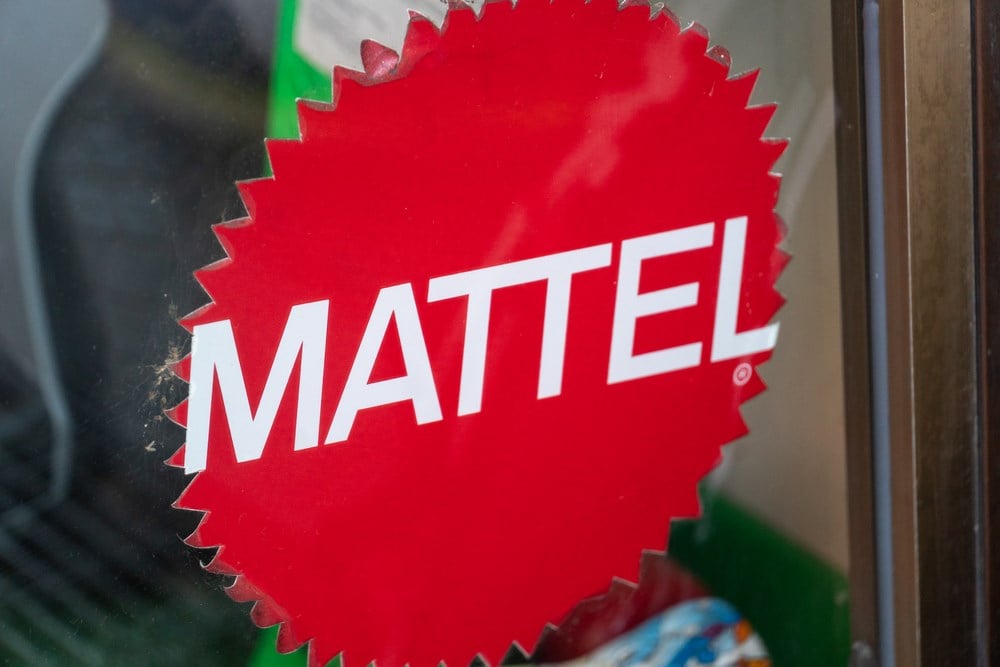 Mattel, Inc. (NASDAQ: MAT) shareholders were tickled pink on Monday after the highly anticipated ‘Barbie’ movie lived up to the hype over the weekend.
Mattel, Inc. (NASDAQ: MAT) shareholders were tickled pink on Monday after the highly anticipated ‘Barbie’ movie lived up to the hype over the weekend.
After debuting nationwide July 21st, the film went on to amass $155 million in North American ticket sales through Sunday. It set two impressive records in the process: 1) the biggest box office opening of 2023 (handily eclipsing ‘Oppenheimer’) and 2) the best debut of a female-directed movie ever.
The world’s leading toy manufacturer was well prepared for the moment after launching an extensive lineup of Barbie the Movie products last month. Nine Barbie and Ken dolls, along with a retro pink convertible and other accessories, were rolled out to stores nationwide to capitalize on Barbie-mania. Combined with Hot Wheels, UNO and Little People ‘Barbie’ mash-ups, the collectibles were priced in the $1.25 to $150.00 range.
It's too early to know Barbie’s ultimate haul, but odds are a challenging discretionary spending backdrop has limited toy purchases — especially with consumers having to fork over big money for tickets and popcorn these days. Plus, the film cost an estimated $145 million to make.
As evidenced by Mattel stock’s modest 2% rise Monday, even a blockbuster like ‘Barbie’ may not move the needle much when it comes to the company’s financials.
Aside from the money that AMC and other movie theaters will bring in, Warner Bros. Pictures, who made the film in partnership with Mattel, will get a big chunk of the Barbie pie. And with the pink princess just one of several Mattel Power Brands (Fisher-Price, Hot Wheels, Thomas & Friends and American Girl are the others), the performance of the rest of the portfolio will likely have a bigger impact.
Heading into the weekend, the consensus estimate for Mattel’s second-quarter revenue was $1.002 billion. On Monday, that figure inched up to just $1.004 billion. Third-quarter estimates have yet to budge.
A good reality check, it shows that box office blowouts don’t always translate to financial windfalls for the brand owner — especially when the brand owner is wrestling with weak domestic sales, cost inflation and a heavy debt burden as Mattel is.
What Is Mattel’s 2023 Growth Outlook?
After revenue declined 22% year-over-year for the second straight quarter in Q1, Mattel is forecast to generate revenue of approximately $5.4 billion this year. This is roughly what it recorded in 2022, so even a big Barbie boost is unlikely to create significant growth.
Although Hot Wheels and e-commerce are bright spots, overall sales have been disappointing. With consumers cutting back on things like action figures, games, and building sets to save money for groceries and other essentials, North American sales fell 27% year-over-year in Q1. Subtract elevated inventory, raw material and labor costs, and management’s 2023 earnings per share (EPS) guidance implies 8% lower profits this year.
Are Mattel Shares Fairly Valued?
Mattel shares are up nearly 30% over the last three months despite the shaky fundamentals. At the midpoint of company EPS guidance, they are trading around 19x this year’s earnings. Industry rival Hasbro is trading around 14x.
While a premium valuation could be argued for Mattel on account of its strong brand portfolio and media prospects, a $2.3 billion debt load in a rising interest rate environment offsets this. Debt accounts for about 60% of the capital structure for both Mattel and Hasbro. Aside from its P/E ratio, Hasbro’s 4.3% forward dividend yield also makes it more compelling than the dividend-less Mattel.
Over the last three years, Mattel stock has returned 23.5% annually. According to Wall Street, however, the next 12 months won’t show anywhere near that type of performance. The consensus price target of $23.50 suggests less than 10% upside.
Granted, analysts could boost their targets if management delivers a positive second-quarter earnings surprise (or raises guidance on Barbie optimism) during its July 26th post-market report. But for now, it appears that the Barbie bump is well-baked into the share price.

